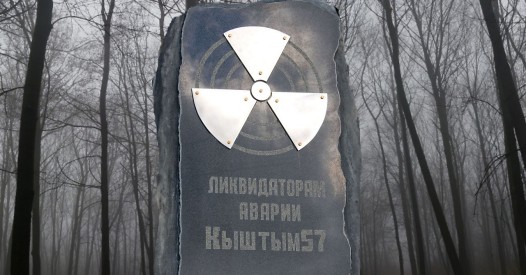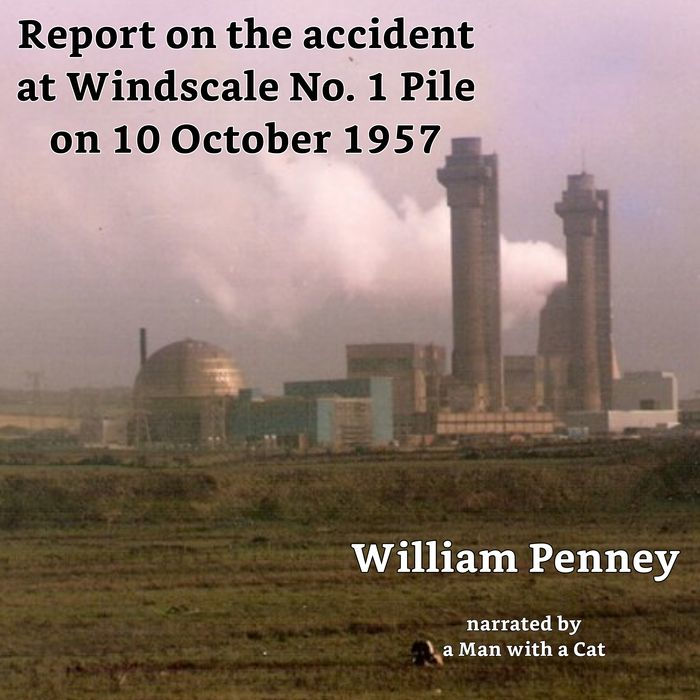Nuclear power kicked into gear in the 1950s, and today some 440 reactors dot the globe, providing an estimated 10 percent of the world’s electricity. Unlike fossil fuels, nuclear power can provide a relatively stable and environmentally friendly source of energy. But when things go wrong, the results are nothing short of catastrophic.
Below, check out five of the most devastating nuclear accidents in history—what caused them, how they were contained (or not) and what happened after.
1. Kyshtym (September 29, 1957)
 In the years following World War II, the Soviet Union constructed dozens of covert facilities—many of them hastily and shoddily built—in an effort to strengthen their nuclear arsenal. One of these, the Mayak nuclear fuel processing plant in the Russian town of Ozyorsk, became the site of a major disaster when the cooling system in a waste storage tank failed, causing the dried radioactive material it contained to overheat and explode. A plume of deadly particles swelled above Ozyorsk and the surrounding region, eventually spanning some 300 square miles. A full week passed before the affected zone’s 10,000 residents were evacuated; because the plant was shrouded in secrecy, they received no explanation for their abrupt and permanent resettlement. By that time, reports had surfaced of mysterious ailments, including people’s skin sloughing off from exposed body parts.
In the years following World War II, the Soviet Union constructed dozens of covert facilities—many of them hastily and shoddily built—in an effort to strengthen their nuclear arsenal. One of these, the Mayak nuclear fuel processing plant in the Russian town of Ozyorsk, became the site of a major disaster when the cooling system in a waste storage tank failed, causing the dried radioactive material it contained to overheat and explode. A plume of deadly particles swelled above Ozyorsk and the surrounding region, eventually spanning some 300 square miles. A full week passed before the affected zone’s 10,000 residents were evacuated; because the plant was shrouded in secrecy, they received no explanation for their abrupt and permanent resettlement. By that time, reports had surfaced of mysterious ailments, including people’s skin sloughing off from exposed body parts.
The Mayak incident has come to be associated with the nearby town of Kyshtym because Ozyorsk did not appear on any official maps at the time.
2. Windscale (October 10, 1957)

Designed to produce plutonium and other materials for the country’s burgeoning nuclear weapons program, Britain’s first nuclear reactor, known as Windscale, was built in northwest England in the late 1940s. On October 10, 1957, workers conducting standard maintenance at the massive facility noticed rising temperatures. Upon further inspection, they discovered that the reactor’s uranium-filled graphite core had caught fire. With the reactor on the verge of collapse, plant operators risked their lives to fight the flames with cooling fans, carbon dioxide and water. The fire finally died out on October 12, but by that time a radioactive cloud was already spreading across the United Kingdom and Europe.
While no evacuations occurred, officials prohibited the sale of milk from the affected area for roughly a month. Scientists estimate that, over the long term, radioactive fallout from the Windscale fire may have caused some 240 cases of cancer.
3. Three Mile Island (March 28, 1979)

The most infamous nuclear accident in U.S. history took place at the Three Mile Island plant near Harrisburg, Pennsylvania, a brand-new facility lauded for its state-of-the-art design, efficiency and affordability during an era of energy crises. It began when a pressure valve in one of the reactors failed to close, allowing cooling water—contaminated with radiation—to drain into adjoining buildings. Control room operators made critical errors as they struggled to contain the crisis, and by early morning the core had heated to over 4,000 degrees—just 1,000 degrees short of meltdown. As radioactive steam began pouring out of the plant, word of the incident leaked to the outside world; within days radiation levels were elevated over a four-county zone. Pennsylvania Governor Richard Thornburgh ordered the evacuation of pregnant women and small children from the area.
On March 31, plant workers were able to address the problems and ended the threat of a meltdown. Although no official deaths or injuries were reported, there has been an ongoing controversy over whether the radiation released at Three Mile Island led to increased cancer and infant mortality rates in the region. The incident also eroded the American public’s faith in nuclear power.
4. Church Rock (July 16, 1979)
Thousands of tons of radioactive waste from the largest underground uranium mine in the United States spilled from a failed dam into the North Fork of New Mexico’s Puerco River in a disaster that likely released more radiation (but received far less media coverage) than the Three Mile Island incident four months earlier.
The spill, from the United Nuclear Corporation’s Church Rock Mill, contaminated land and water used by members of the Navajo Nation, backing up sewers, affecting two aquifers, and sending contaminants as far as 80 miles downstream. Nevertheless, state and national officials downplayed the incident, which had primarily affected a rural, sparsely populated, majority-American Indian area. When the Navajo Tribal Council sent a telegram to the Governor of New Mexico asking him to declare a state of emergency, their request was denied.
5. Chernobyl (April 26, 1986)

Built in the late 1970s about 65 miles north of Kyiv in Ukraine, the Chernobyl plant was one of the largest and oldest nuclear power plants in the world. In April of 1986, a mishandled safety test at one of the facility’s four reactors created a sudden power surge, which in turn led to a series of blasts that blew the 1,000-ton steel top off of the reactor. A lethal cloud of radioactive material gathered over the nearby town of Pripyat—which was not evacuated until 36 hours after the explosion—before wafting over large parts of Europe.
In the opening days of the crisis, 32 people died at Chernobyl and dozens more suffered radiation burns. The radiation that escaped into the atmosphere—equivalent to several times that produced by the atomic bombs dropped on Hiroshima and Nagasaki—contaminated millions of acres of forest and farmland. The full human toll from the calamity is still unknown, but experts believe that thousands of people died and as many as 70,000 suffered severe poisoning. In 2000, the last working reactors at Chernobyl were shut down and the plant was officially closed.
6. Fukushima (March 11, 2011)

On March 11, 2011, a massive undersea earthquake—the largest ever recorded in Japan—occurred off the northeast coast of the country’s Tōhoku region. The 9.1 magnitude quake triggered a tsunami that struck the Fukushima Daiichi nuclear plant. During the emergency, each of the three operational nuclear reactors at the plant shut down successfully, but the backup power and cooling systems failed. As a result, residual heat caused fuel rods in all three reactors to partially melt down. The facilities where Reactors 1 and 3 were located exploded on March 12 and 14, prompting the government to evacuate everyone within a 20km radius. Another explosion in the building housing Reactor 2 on March 15 released even more radiation.
The full extent of the fallout became apparent over the ensuing months, with the government eventually evacuating all residents within a 30km radius of the plant. No deaths were initially attributed to the incident, although 18,000 people lost their lives as a result of the earthquake and tsunami.